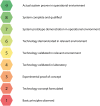Computer-assisted fetal laser surgery in the treatment of twin-to-twin transfusion syndrome: Recent trends and prospects
- PMID: 35983630
- PMCID: PMC9541851
- DOI: 10.1002/pd.6225
Computer-assisted fetal laser surgery in the treatment of twin-to-twin transfusion syndrome: Recent trends and prospects
Abstract
Fetal laser surgery has emerged as the preferred treatment of twin-to-twin transfusion syndrome (TTTS). However, the limited field of view of the fetoscope and the complexity of the procedure make the treatment challenging. Therefore, preoperative planning and intraoperative guidance solutions have been proposed to cope with these challenges. This review uncovers the literature on computer-assisted software solutions focused on TTTS. These solutions are classified by the pre- or intraoperative phase of the procedure and further categorized by discussed hardware and software approaches. In addition, it evaluates the current maturity of technologies by the technology readiness level and enumerates the necessary aspects to bring these new technologies to clinical practice.
© 2022 The Authors. Prenatal Diagnosis published by John Wiley & Sons Ltd.
Conflict of interest statement
The authors have no conflicts of interest to declare.
Figures




References
-
- De Lia JE, Cruikshank DP, Keye WR, Jr . Fetoscopic neodymium:YAG laser occlusion of placental vessels in severe twin‐twin transfusion syndrome. Obstet Gynecol. 1990;75(6):1046‐1053. - PubMed
Publication types
MeSH terms
LinkOut - more resources
Full Text Sources

